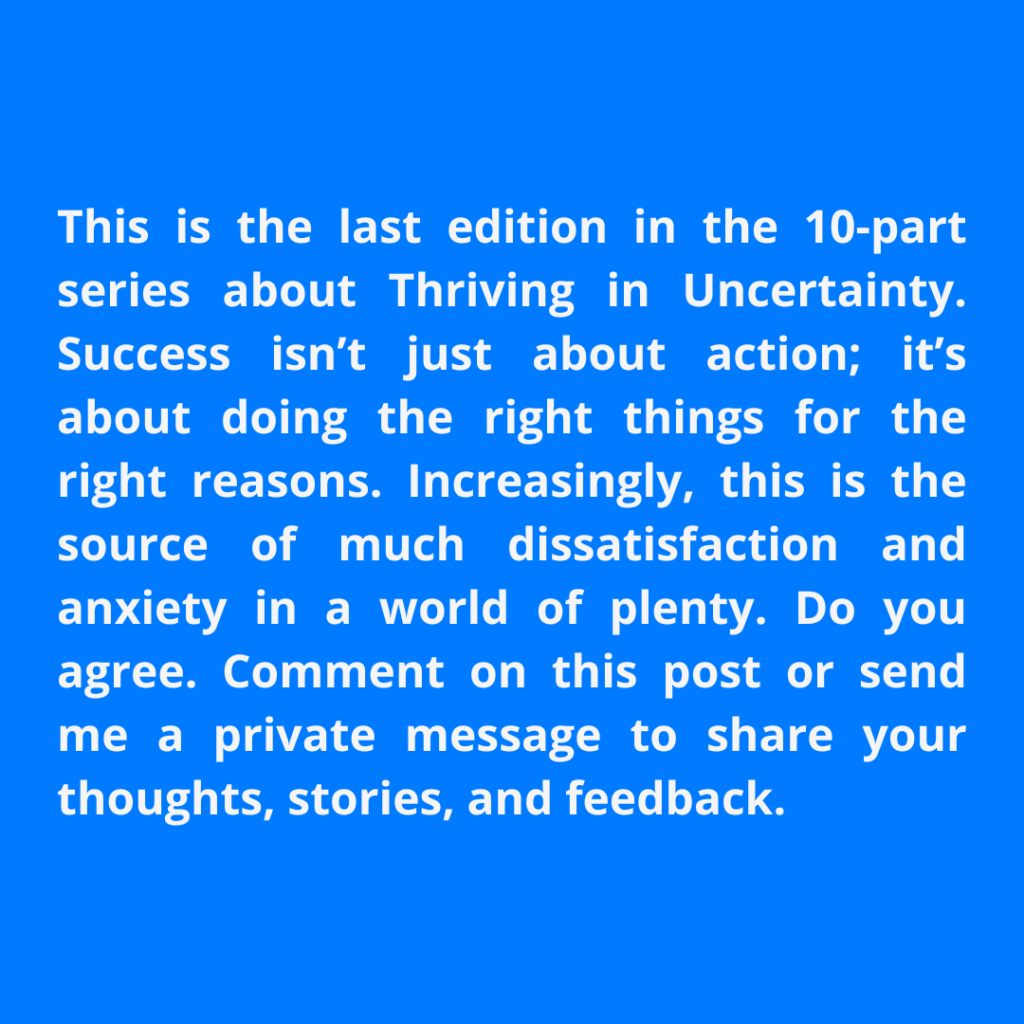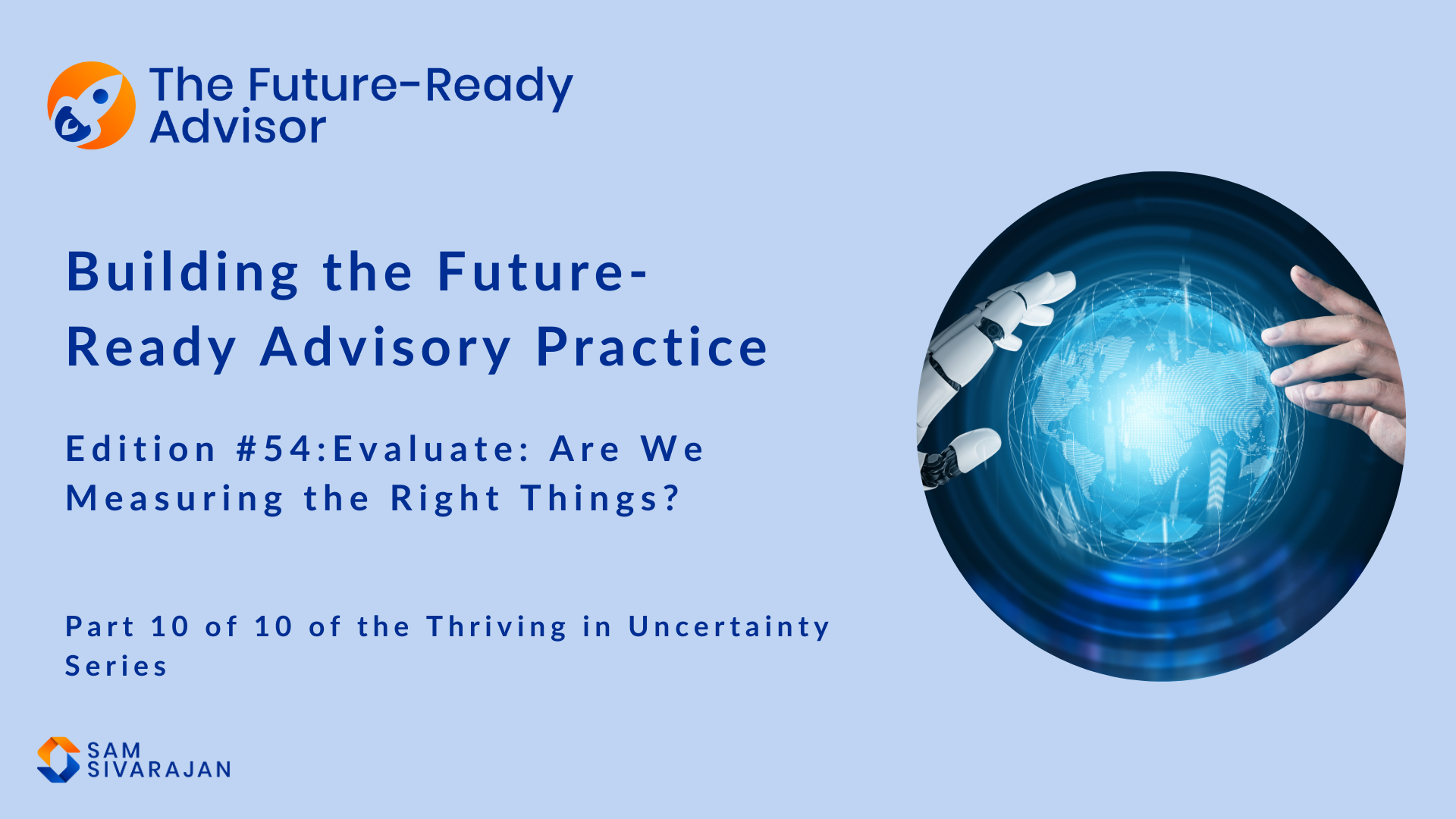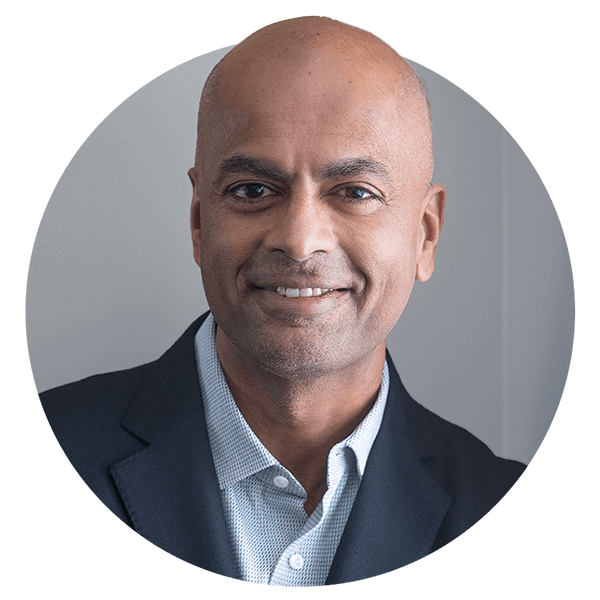part 10 of 10 of the Thriving in Uncertainty Series
Welcome to the 54th edition of #theFutureReadyAdvisor Newsletter!
Subscribe & join the conversation. Share comments and feedback.
Estimated reading time: 9 minutes
Rethink Success: Is Your Ladder Leaning on the Right Wall?
Many of us are raised to believe that life is a ladder—one we must climb rung by rung, accumulating wealth, titles, and accolades along the way. But often, as I mentioned in my previous book Uphill, it is only when we near the top of that ladder that we realize it has been leaning against the wrong wall. We are left asking ourselves, “Is this what my life is all about?” Yet, by that point, we feel too invested—too much time, effort, and status tied up to make a change.

A critical reason for this disillusionment lies in the fact that we are measuring the wrong things. In today’s fast-paced, success-driven world, we often place value on what can be easily measured—our salaries, job titles, the number of likes on social media. But as the saying goes, “We need to learn to measure what we value, instead of valuing what we can measure.” By focusing on external markers of success, we lose sight of what really matters: purpose, relationships, and personal growth.
Many of us are taught to climb the ladder of success, chasing wealth and titles. But too often, we reach the top only to realize the ladder was leaning against the wrong wall. We’ve been measuring the wrong things—focusing on external success instead of what truly matters: purpose, relationships, and growth.

Maslow’s Hierarchy of Needs offers insight into this. At the base are physiological and safety needs, which correspond with financial stability and security. However, the higher levels—love and belonging, esteem, and self-actualization—are where true fulfillment lies. Yet, our society pushes us to focus on extrinsic motivators like wealth, power, and recognition, keeping us trapped on the hedonic treadmill. Psychologists explain this treadmill as the tendency to continuously chase more—be it more money, more possessions, or more achievements—without ever reaching lasting satisfaction.
Martin Seligman’s PERMA model adds further depth to this discussion. The model, which highlights Positive emotions, Engagement, Relationships, Meaning, and Accomplishment, reminds us that well-being is multi-faceted. When we define success solely by how much we earn or how high we climb on the corporate ladder, we neglect the other dimensions that contribute to long-term happiness. A study by Harvard Business School found that the school’s most successful graduates had to make trade-offs. That everyone has multiple dimensions to their lives — work, family, community, health, and so on — and that because time is finite (see the previous edition), time spent in one dimension is time not spent in another. Their point is that you can’t maximize your performance in all these areas of your life — by maximizing one or two, you are necessarily accepting a potentially suboptimal performance in the other dimensions. Maximizing performance in one area inevitably means accepting suboptimal results in others.
An illustrative case comes from Clayton Christensen’s How Will You Measure Your Life?. As a student, Christensen made a commitment not to play sports on Sundays due to his religious beliefs. Despite the pressure from his teammates and coaches to compete in an important playoff game, he remained true to his values. This was one of his “rocks”—a core principle that guided his decision-making. Christensen’s example underscores the importance of identifying our own rocks—our core values and non-negotiables—so that we can make decisions based on what truly matters to us, not what others expect.

As financial advisors and leaders, it’s crucial to guide clients toward understanding their intrinsic values. Encourage them to measure success not by external standards but by how well their actions align with what they genuinely value.
Enough: The Dangers of Growing Too Fast
When do we know that we’ve achieved enough? For both individuals and businesses, this is one of the most critical questions to answer. Research has consistently shown that after a certain income level—typically around $75,000 a year in the U.S.—additional earnings do little to boost happiness. Beyond meeting our basic needs, more money, more possessions, and even more success bring diminishing returns. This is the curse of the hedonic treadmill—the more we have, the more we want, and the cycle never ends.
This phenomenon plays out not just in personal lives but also in the corporate world. Consider Yahoo, once a tech giant in the late 1990s and early 2000s. In its bid for rapid expansion, Yahoo spread itself too thin, losing sight of its core strengths. By pursuing too many ambitions—many unrelated to its core business—Yahoo missed critical opportunities, like acquiring Google and Facebook when they were within reach. Ultimately, its overreach led to its downfall, and today, it is a shadow of its former self.
Another stark example is WeWork. Under Adam Neumann’s leadership, WeWork expanded aggressively, going global without ensuring that the fundamentals of its business were sound. What started as a promising venture with a $47 billion valuation quickly crumbled. Within months, the company’s valuation plummeted, and it came close to bankruptcy in 2019. The lesson is clear: success is not about constant, unchecked growth. It’s about sustainable, thoughtful expansion.
And, of course, there’s the story of Lamborghini and Ferrari, which I share in Uphill. In the 1950s and early 1960s, Ferrari was regarded as the premier high-performance sports car manufacturer. Ferruccio Lamborghini, a successful tractor manufacturer, was dissatisfied with his Ferrari, specifically criticizing its clutch. When Lamborghini approached Enzo Ferrari with his concerns, Ferrari dismissively replied, “Let me make cars. You stick to making tractors.” Insulted by the remark, Lamborghini resolved to create a better sports car. Within four months, he had developed his first competing vehicle, and within four years, Lamborghini had established himself as a serious competitor to Ferrari. His engineers even urged him to build a true racing car to outperform Ferrari on the track.
However, Lamborghini resisted the temptation. Recognizing that such a rivalry could easily spiral out of control, akin to the hedonic treadmill, he refused to engage in an endless competition. Thinking of his family, particularly his 16-year-old son, Lamborghini chose to focus on building luxury sports cars rather than pursuing racing dominance. This decision illustrates a key lesson in controlling mimetic desires, or external metrics, rather than allowing them to dictate one’s path.

These examples are not just cautionary tales for businesses—they are life lessons. Just as Lamborghini resisted the urge to chase endless growth, we too must recognize when we have “enough.” Knowing when to stop, whether in our careers, our financial pursuits, or our personal lives, allows us to focus on what truly matters.
Key Takeaways for Advisors and Leaders
- Measure What Matters
Help clients and teams define success based on intrinsic values. The size of their bank account or their job title doesn’t equate to happiness. Encourage them to find and measure success in areas like personal fulfillment, meaningful relationships, and purpose. - Recognize the Trade-offs
Like Yahoo and WeWork, chasing endless growth without a clear strategy can lead to failure. Similarly, individuals who pursue career success at the expense of family or health may end up feeling unfulfilled. Encourage clients to recognize the trade-offs inherent in every decision. There is no judgement, just a recognition that we all make trade-offs – either implicitly or explicitly. - Identify Core Values Early
Just as Clayton Christensen had his “rocks,” we all need a set of core values to guide us through tough decisions. Help clients identify these values early on, so they can build lives that reflect what truly matters to them. - Know When You Have Enough
The pursuit of “more” can become all-consuming. Encourage clients to regularly reassess their goals and priorities. Sometimes, the best way to move forward is by recognizing that they already have what they need.
Over the past 10 parts of this Thriving in Uncertainty series, we’ve explored a range of tools and frameworks—from building resilience and adaptability, to gaining perspective with the 10/10/10 Rule, to focusing on what truly matters in life and business. The key message has been clear: while we can’t control the uncertainties of the world, we can control how we respond to them.
I believe these tools and frameworks will help us navigate the unpredictable future with confidence and clarity. Let me know what you think? How will uncertainty play a role in your life? Do these tools help?But this journey doesn’t end here. For more strategies and insights, follow me on LinkedIn or visit my website, where I’ll continue sharing valuable tools to help us all thrive.
✨ Enjoyed this edition of The Future-Ready Advisor? Share the insights! Invite your friends and colleagues to subscribe and join nearly 1,100 other forward-thinking advisors. Let’s grow our community together.
💬 Have feedback or a topic you’d like covered? Drop me a note on LinkedIn—I’d love to hear from you!
👉 When you’re ready to take the next step, I’m here to support you with:
- Engaging Speaking Engagements & Workshops designed for your team and clients
- Customized Consulting & Coaching Services to elevate your practice
Explore my podcast, articles, and more free resources at www.samsivarajan.com.


